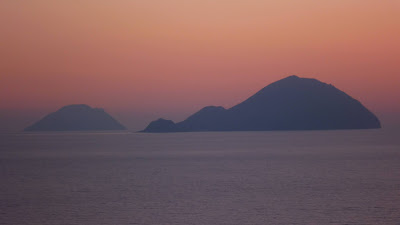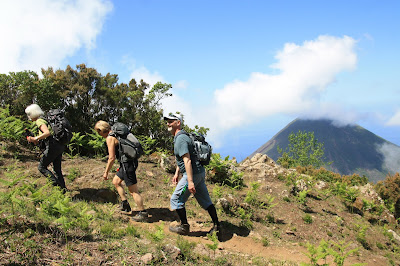Salina, una delle 7 isole dell’arcipelago delle Isole Eolie, formata da sei antichi vulcani, possiede il primo e terzo rilievo più alto dell’arcipelago: il monte Fossa delle Felci, e il monte dei Porri, che conservano la tipica forma conica. Da questi due vulcani spenti, visti da nord-est, deriva il suo antico nome greco. Dagli scavi emersi si pensa che l’isola fu abitata già all’età del bronzo e fu una delle più popolate nell’antichità.
A seconda del periodo in cui si decide di visitare l’isola, oltre ai colori, ciò che cattura l’animo del viaggiatore saranno sicuramente gli inebrianti profumi del glicine o dei fiori di cappero, ad esempio, ma è giusto informarvi che l’isola è fruibile tutto l’anno e vi regalerà magia ed un paradiso inatteso!
Food&wine
E’ l’isola più fertile delle Eolie e ricca d’acqua; vi si coltivano uve pregiate dalle quali si ricava la Malvasia delle Lipari, un vino di sapore dolce, ed i capperi ed i cucunci, i frutti del cappero, utilizzati anche negli aperitivi ed esportati in tutto il mondo.
Ma lo sapete che sull’isola c’è una grande tradizione che vede l’utilizzo dei capperi sia nei piatti salti che dolci??? Ma anche castagne, un ottimo olio d’oliva di alta qualità e bassa acidità.
Molti esperti del “food”, compresi gli chef locali e stellata come Martina Caruso, grande orgoglio siciliano, sostengono che i capperi di Salina, che sono abbondanti sull’isola, sono i migliori del mondo, infatti ogni anno a giugno c’è un festival per celebrarli! Imperdibili sul tipico pane cunzato, un semplice street food siciliano, tipico delle isole, è un saporito e croccante pane rotondo condito da queste parti di solito con pomodoro fresco, mozzarella e capperi, ma goloso anche in tante varianti.
Shopping e non solo…
Nella zona del porto di Santa Marina Salina, la parte più frequentata dell’isola, con boutique, negozi di ceramica ed altre specialità lungo la breve strada principale di Via Risorgimento, è d’obbligo una visita ai negozi che includono il concept store chic Le Signorine. Frutto dell’ingegno delle sorelle Marietta e Concetta, la boutique vende articoli fatti a mano dal design indipendente, dalle borse ai gioielli ai vestiti per bambini. Salearancio mescolanza di intuito e dedizione, uno storico laboratorio di idee per chi vuole sentirsi unico e coccolato.
Lungo la stessa strada si trova l’eclettica galleria, spazio artistico e libreria Amanei. Ogni anno, in collaborazione con la galleria romana Parione9 di Elettra Bottazzi e Marta Bandini, ospita artisti in residenza da aprile a ottobre.
Salina tra “viaggiatori” e cinema
Da Dumas padre a Guy de Maupassant, che fece delle Eolie una tappa del suo Grand Tour nel 1885, sono stati moltissimi i viaggiatori illustri che hanno visitato Salina e ne hanno descritto le bellezze.
La Riserva Naturale di Salina
Le alte pendici dell’isola di Salina sono ammantate di felci, pioppi, castagni e della tipica macchia mediterranea con ginestre, mirti e corbezzoli. Le medie e basse pendici sono terrazzate e cosparse di cespugli di capperi, fichi d’india, frutteti, oliveti, vigneti.
L’isola verde con 6 tappe tutte da visitare!!
Malfa in zona collinare e a 100 mt slm, con Pollara, chiusa a nord dal Perciato, un promontorio forato dal mare: nel tufo della costa sono visibili i magazzini e i rifugi delle barche scavati dai pescatori, frazione insieme a Capo Faro e al Faraglione.
Leni a 200 mt slm anche se non si affaccia direttamente sul mare, si estende tra due dei sei vulcani che costituiscono la conformazione geologica di Salina.
Lingua – frazione di Santa Marina Salina, nota per il suo museo etno-antropologico ed un itinerario naturalistico che vi porterà alla scoperta di un lago salato, usato in antichità come salina.
Il nostro consiglio?? Non esiste periodo all’anno in cui non vi proporrei di andare a Salina, patrimonio naturale, storico e culturale ed un mare intenso e penetrante come l’azzurro che lo caratterizza!
Paola F. J. Torrisi
Salina, the greenest of the Aeolian Islands
Salina, one of the 7 islands of the archipelago of the Aeolian Islands, formed by six ancient volcanoes, has the first and third highest relief of the archipelago: Mount Fossa delle Felci, and Mount dei Porri, which retain the typical conical shape. From these two extinct volcanoes, seen from the north-east, derives its ancient greek name. From the excavations emerged it is thought that the island was already inhabited in the Bronze Age and was one of the most populated in antiquity.
"As the hydrofoil approaches Salina, the second-largest island in Sicily's Aeolian archipelago, it's not hard to see why Michael Redford and Massimo Troisi chose it to shoot many scenes in "Il Postino." The 1994 film won an Academy Award for its tale of falling in love with poetry, and to that end, there couldn't be a more poetic setting than Salina." What CNN Travel writes.
Depending on the period in which you decide to visit the island, in addition to the colors, what captures the soul of the traveler will surely be the heady scents of wisteria or caper flowers, for example, but it is only fair to inform you that the island is accessible all year round and will give you magic and unexpected paradise!
Food&wine
It 's the most fertile island of the Aeolian Islands and rich in water, there are cultivated grapes from which we get the Malvasia delle Lipari, a sweet wine, and capers and cucunci, the fruits of the caper, also used in aperitifs and exported all over the world.
But did you know that on the island there is a great tradition of using capers in both savory and sweet dishes? But also chestnuts, an excellent olive oil of high quality and low acidity.
Many "food" experts, including local and star chefs such as Martina Caruso, a great Sicilian pride, claim that Salina capers, which are abundant on the island, are the best in the world, in fact every year in June there is a festival to celebrate them! Unmissable on the typical "pane cunzato", a simple Sicilian street food, typical of the islands, it is a tasty and crispy round bread seasoned in these parts usually with fresh tomatoes, mozzarella and capers, but delicious also in many variations.
Salina is rich in organic wine cellars and of great intuition in discovering new flavors in the use of grapes, it will give a unique experience to wine tourism lovers.
Shopping and more...
In the harbor area of Santa Marina Salina, the busiest part of the island, with boutiques, pottery stores and other specialties along the short main street of Via Risorgimento, a visit to the stores including the chic concept store Le Signorine is a must. The brainchild of sisters Marietta and Concetta, the boutique sells handmade items of independent design, from handbags to jewelry to children's clothing. Salearancio mixture of intuition and dedication, a historic laboratory of ideas for those who want to feel unique and pampered.
Along the same street is the eclectic gallery, art space and bookstore Amanei. Every year, in collaboration with the Roman gallery Parione9 of Elettra Bottazzi and Marta Bandini, it hosts artists in residence from April to October.
Salina between "travelers" and cinema
From Dumas father to Guy de Maupassant, who made the Aeolian Islands a stop on his Grand Tour in 1885, there have been many illustrious travelers who have visited Salina and described its beauties.
Thanks to cinema, Salina becomes known to the public, with the beach of Pollara, set of Il Postino by Massimo Troisi, the small lake of Lingua where Nanni Moretti played soccer in Caro Diario, Capo Gramignazzo, between Capo Faro and Malfa, in Libero Burro by Sergio Castellitto. But before that, the images of the backdrops in the 35 mm short films - such as Cacciatori sottomarini and Tonnara, multi-awarded at the Venice Film Festival - made in the first decade after the war by the Sicilian nobleman Francesco Alliata di Villafranca, founder in 1945 (along with a group of friends including Fosco Maraini) of the legendary Panaria Film, not to forget Rinella - is known for two peculiarities: the black beach, surmounted by caves carved into the rock, and the square, set of the very famous film Vulcano, also interpreted by Anna Magnani.
The Natural Reserve of Salina
The high slopes of the island of Salina are covered with ferns, poplars, chestnut trees and the typical Mediterranean scrub with brooms, myrtles and strawberry trees. The medium and low slopes are terraced and sprinkled with bushes of capers, prickly pears, orchards, olive groves and vineyards.
The green island with 6 stages all to visit!!!
Santa Marina Salina, classified one of the most beautiful seas of Italy.
Malfa in a hilly area and 100 meters above sea level, with Pollara, closed to the north by Perciato, a promontory pierced by the sea: in the tuff of the coast are visible warehouses and shelters of boats dug by fishermen, a village along with Capo Faro and Faraglione.
Leni at 200 meters above sea level even if it does not directly overlook the sea, extends between two of the six volcanoes that make up the geological conformation of Salina.
Lingua - hamlet of Santa Marina Salina, known for its ethno-anthropological museum and a naturalistic itinerary that will lead you to the discovery of a salt lake, used in ancient times as a saltworks.
Our advice? There is no time of the year when I would not suggest you to go to Salina, natural, historical and cultural heritage and a sea as intense and penetrating as the blue that characterizes it!
Thanks to Siciliamagazine.net
#TakeitSlowlyByUnAltraSicilia



























